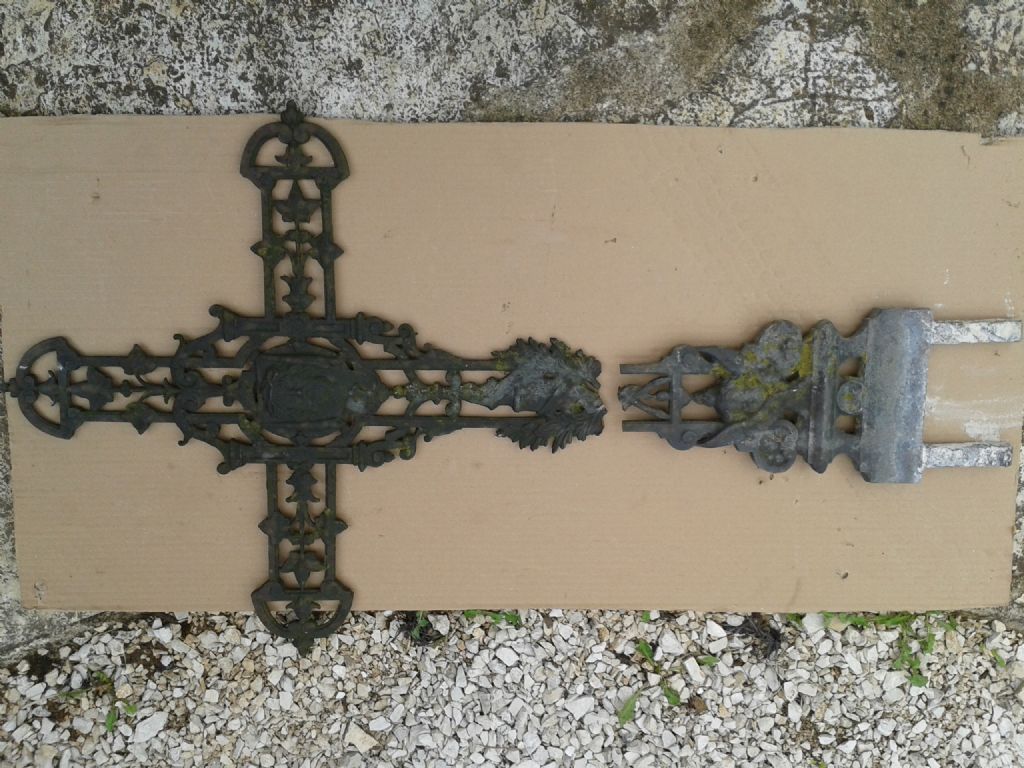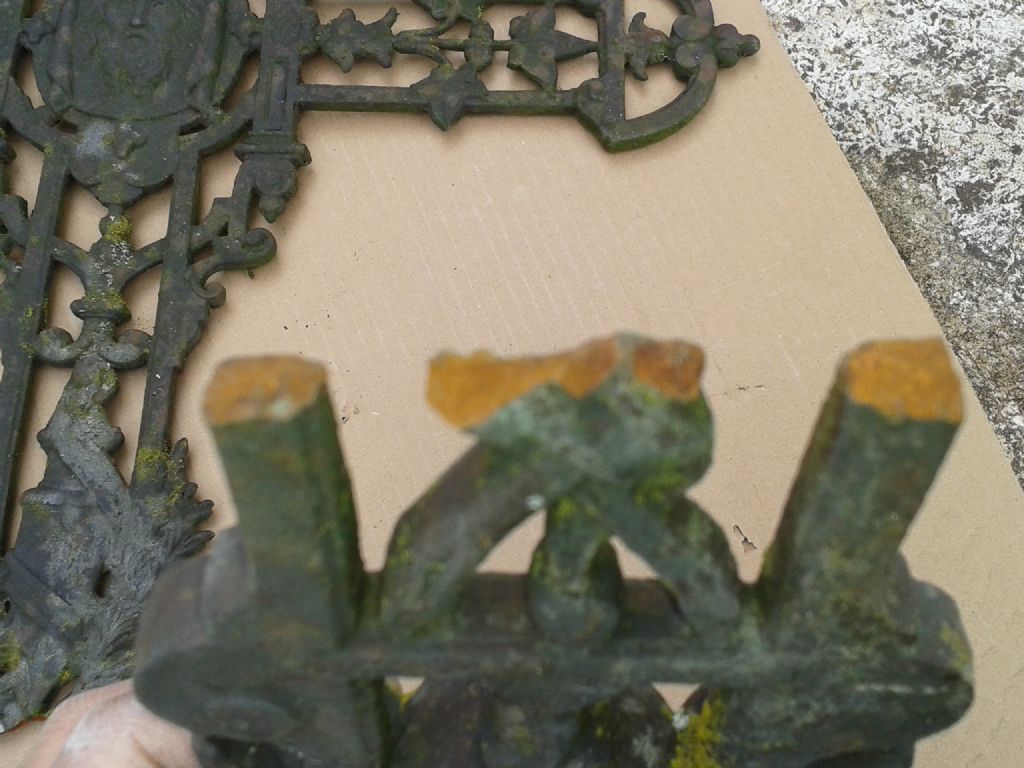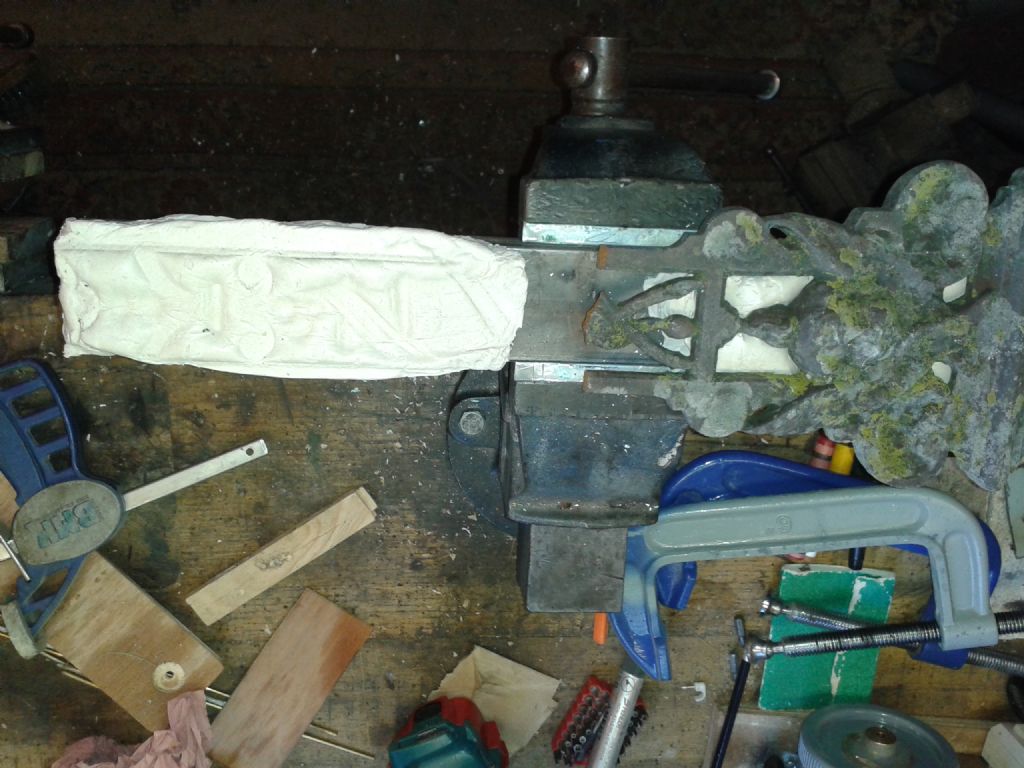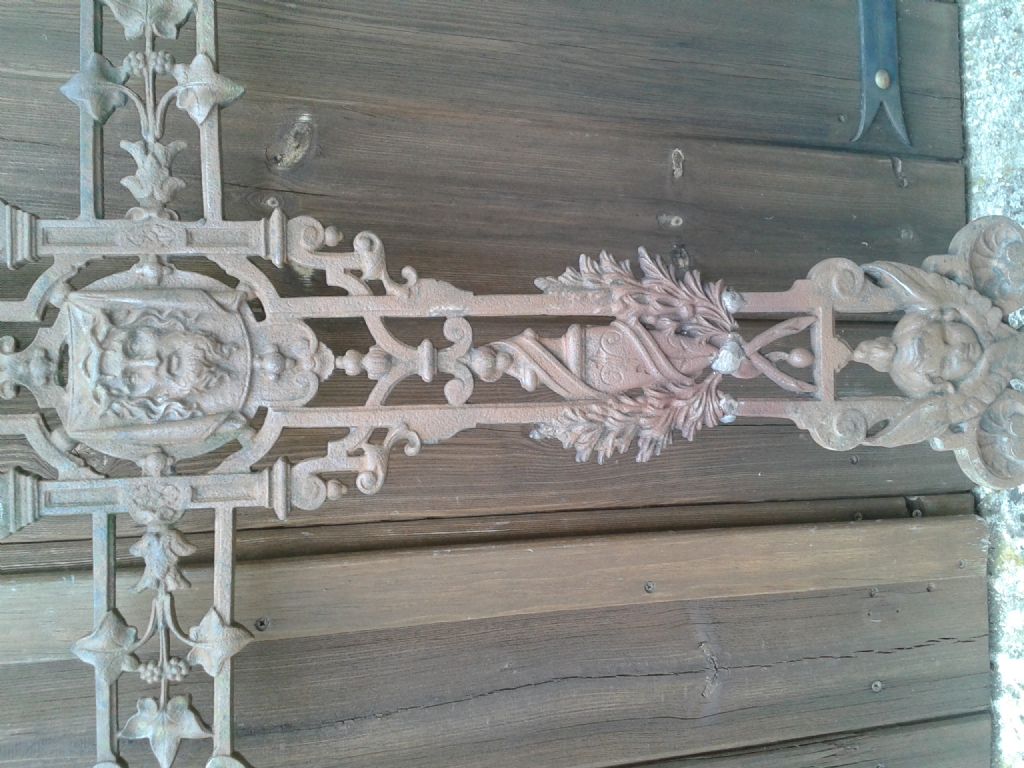Hi Speedy
Gee they picked the wrong place to break It. Any weakness and it will break again.
I notice the pattern has 2 straight lines running almost top to bottom. Would it be possible to place 2 say 12mm, (or whatever size fits) square stainless steel backers behind the object lined up with the pattern, at the very bottom they may have to have a kink in them to go behind the legs, and they may need to be bent and relieved with an angle grinder to follow the line of the back surface. Finally the piece could be wired the same way lead light windows attached to the stiffener bars are. if the back of the piece and the supporting bars were sandblasted you should be able to use epoxy to attach it to the backers. one coat to glue it then epoxy putty to fill in the gaps and blend it in, then plenty of paint applied by brush for texture.
Many years ago I made a traditional Victorian style iron fence for our house out of 3/4" steel bar, a local foundry cast 300 steel spears for it. They had a small cast recess in the base to fit over the bars, the recess was a bit small I had to turn down all the bars for a loose fit, the cast hole varied. the spears were chilled and very hard, too hard to bore out.
I used nickel iron rods to attach the spears. The spears were preheated in a domestic oven to about 500F before welding. I made a jig to hold the bar and spear in alignment and allow the work to turn as I welded turning them at the same time with the other hand. I ran a couple of heavy passes. The bars were not preheated by the time the second pass was going the bars were very hot. I used plenty of current for good penetration. With so many to do there was no time to fuss around.
The welds were dressed to a nice fillet with a bench grinder with the wheel edge dressed round to create a nice fillet.
Over the more than 20 years only 2 of the welds cracked. easily fixed with epoxy. the rest have held firm.
The story above is a success story….
It would be tempting to try nickel Iron rods on the cast Iron cross however with such a small section to work on the chances of success are diminished. If the piece is historically important and part of a building failure is not an option. Back supports are less invasive. The basic rule of restoration is that no further damage is done, and Ideally that the process can be reversed. If it falls again it may not just break into 2 pieces. cast iron can shatter.
Regards
John
Nigel McBurney 1.








